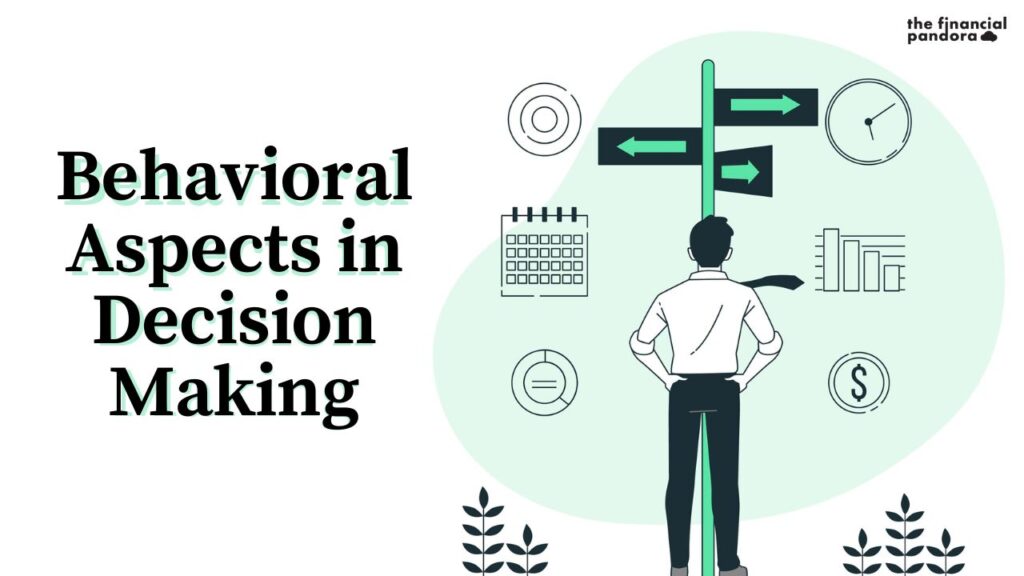Before we go into any further details of how behavioural studies are done and their impact on decision-making, it would be good to understand some jargon commonly associated with them.
Judgement – Refers to the cognitive or conscious aspect of a human’s decision-making that induces a human to process all the information before taking action.
Bias – It is a strong feeling of favour towards or against a person, a group of people, an idea or one side of an argument, often not based on a fair judgement or facts but intuition.
Heuristic – This is a mental shortcut our mind takes to simplify the problem and choose the correct course of action. Heuristics is a sub-field of Behavioral Science which encompasses not only the cognitive but also the emotional/sub-conscious part of the human mind.
Fallacy – This is a false idea that most people believe to be accurate, commonly referred to as traps.
Phew! Now that we are done with understanding the “Technical Jargon”, let us move on to why it is so vital in our everyday decision-making and the impact it can have on our financial health.
Importance of Understanding Behavioral Aspects in Finance
Let us take the most common example of the Stock Market. Any person who has invested, trades or in general follows the stock market would have heard a comment or remark made “Market has reacted on fears of increased inflation” or the “Market breadth has turned negative due to fears of conflict”. Think carefully — is it the market that has turned fearful or the investors? Your answer should be “Investors”.
The Indian Stock Market has a pseudo-indicator “VIX”, which measures its anticipated volatility for the near term. In case of any increase in investor fear, the volatility and VIX rise. Simply by understanding how the investors feel or think based on external stimuli, you can make sound investment decisions and avoid immediate losses or pitfalls.
While this is just one commonly known example, every decision in finance and the overall management of a business should be made considering the market sentiment.
Types of Heuristics
Now that we know that heuristics are mental shortcuts that people take while making decisions, by simply understanding the most prominent ones, we will be able to stimulate the subconscious of consumers and make our products the first choice in their minds.
Availability Heuristic – People tend to assess the likely hood of an event based on the occurrences of that event that is readily “available” in memory. Lottery owners often employ the Availability Heuristic. Due to consistent advertising of lotteries and their winners’, people often overestimate the odds of winning a lottery which is often 1 in a million if not more. Their consistent advertising makes the masses feel like there are many winners and makes these instances readily available for them in their memory, thereby driving the number of lottery tickets up.
Representative Heuristic – While making judgements about an individual or event, people tend to look for traits that the individual or event may have that correspond with previously formed stereotypes. Representative Heuristic is often employed by the HR Team of many businesses who try to judge the performance of employees based on the benchmarks set by a past employee who was considered ideal.
Confirmation Heuristic – It leads you to seek out information that confirms your existing beliefs, mental models and hypotheses while discounting information that refutes them. It confirms with the catchphrase, “We don’t see things as they are; we see them as we are”. The Confirmation Heuristic is often employed in our day-to-day activities. The blame automatically falls on the naughty child for anything broken in the house.
Affect Heuristic – Most of our judgements follow a practical or emotional evaluation before any form of logical reasoning occurs. “Thinking with your heart” — a common catchphrase in our daily use means that we are making decisions based on our feelings instead of a rational school of thought. A lot of advertisement campaigns tend to play on this heuristic. For example, Cadbury’s “Kuch Meetha Ho Jaye, Aaj pehli tareek hain” played on the joy that the masses feel the moment their salary is credited to their account every month and portrayed their products as something that could be used to celebrate these small joys.
While we have just learnt about the most prominent shortcuts our mind takes, we must learn about the various traps we face in the decision-making process, commonly referred to as fallacies.
Stay tuned in for part 2 of this article in order to learn more about these fallacies.
Follow Us @




